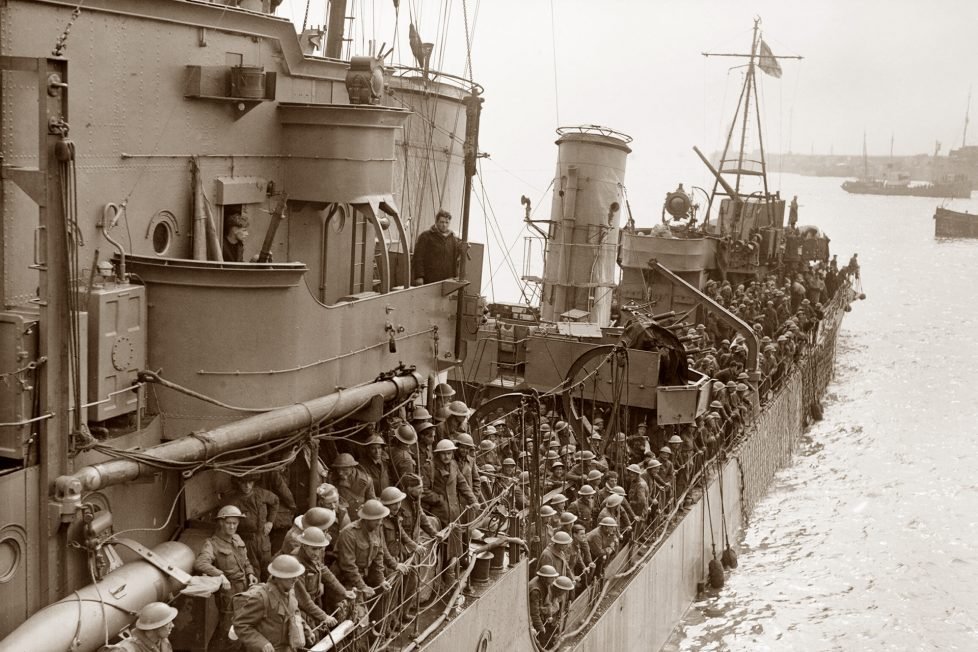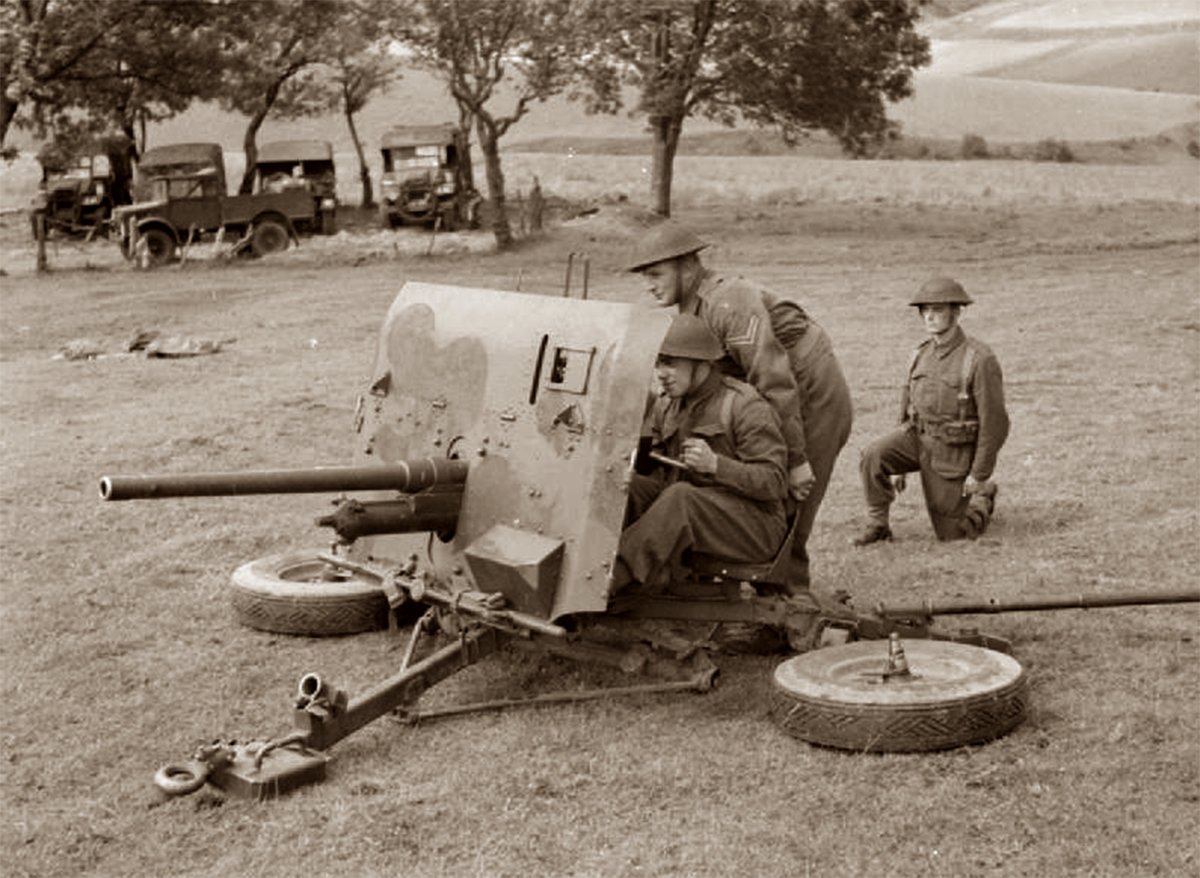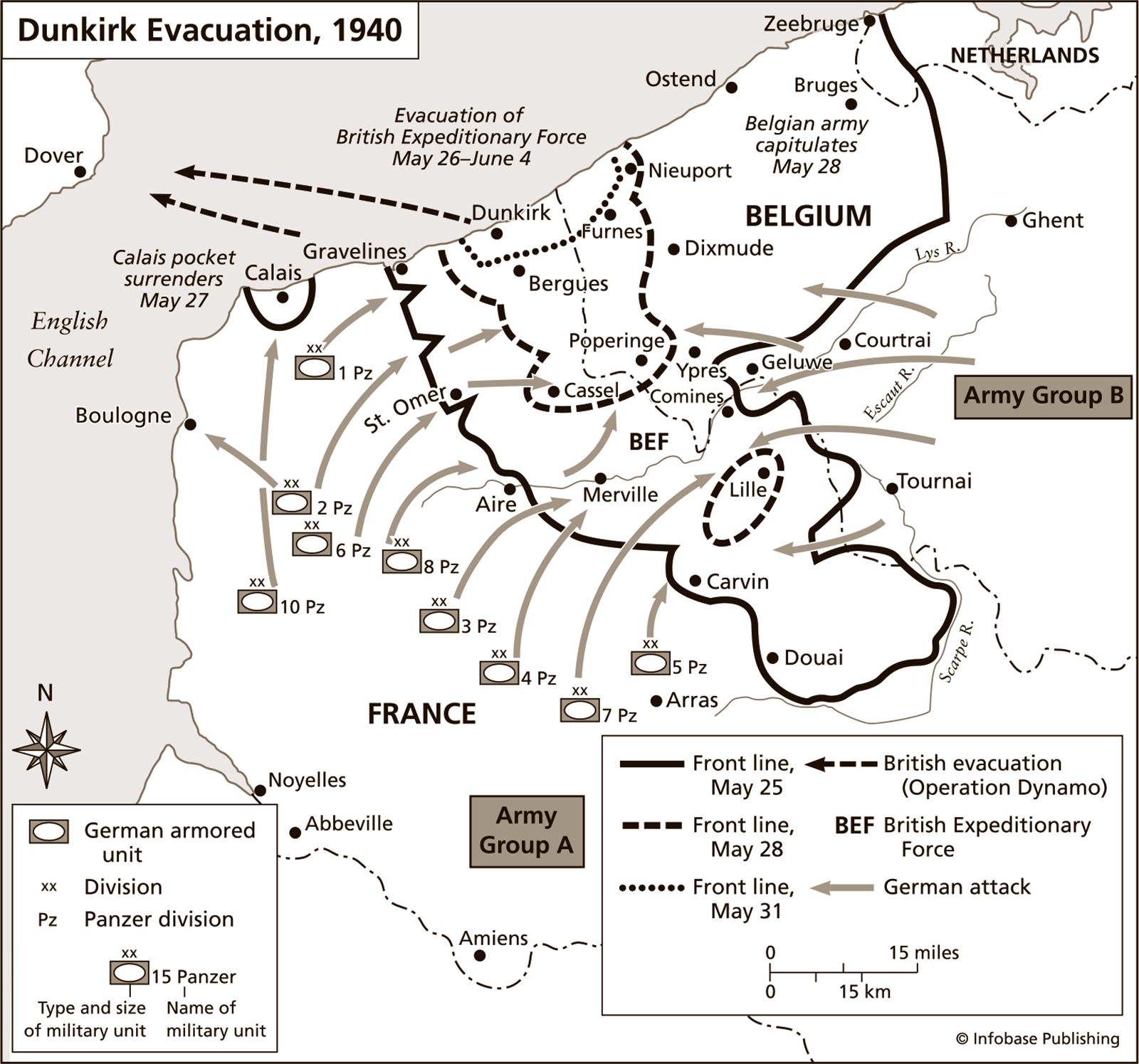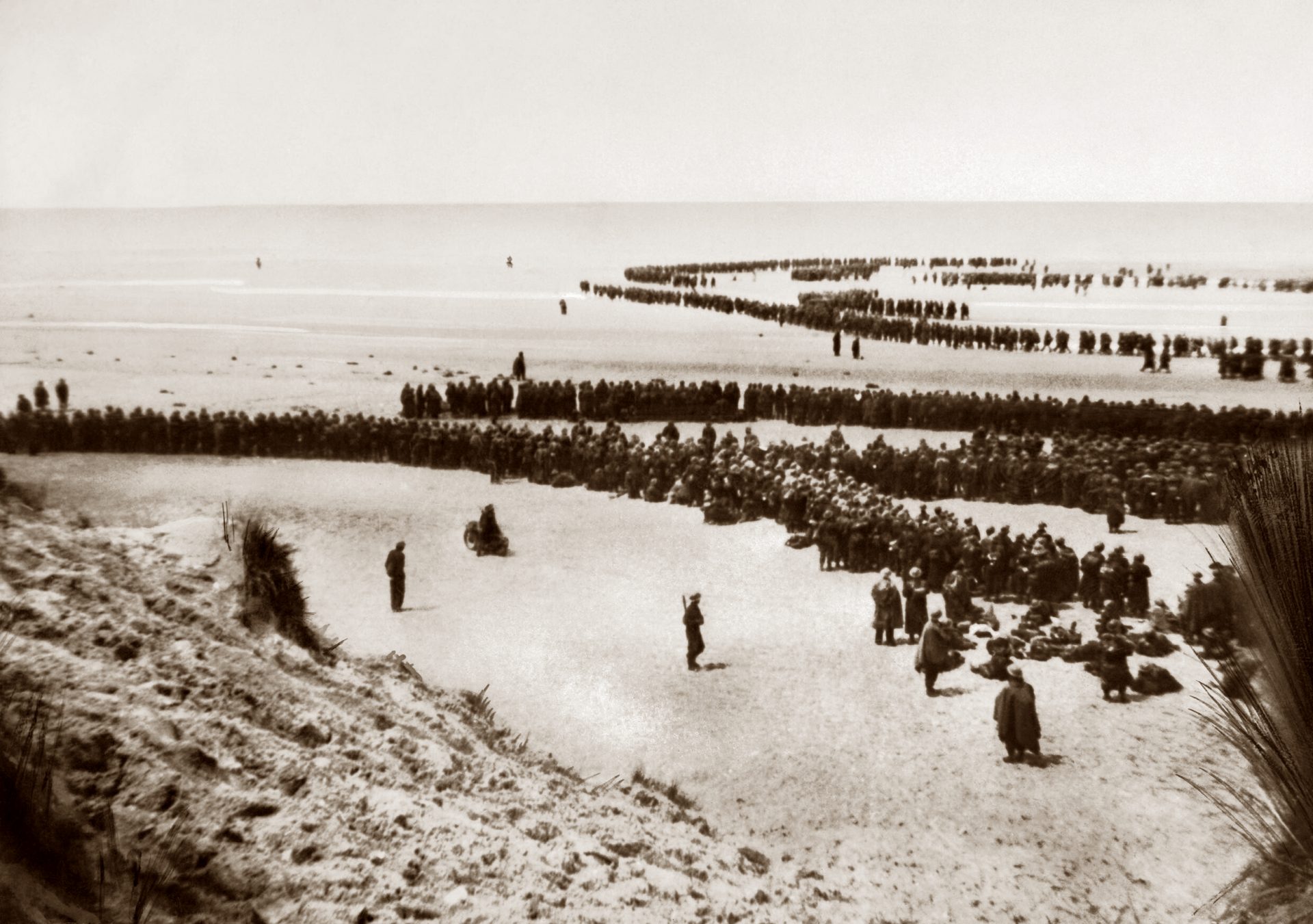The Battle of Dunkirk: Why the Germans Failed?
Dunkirk's battle was key in WWII. Germans encircled Allies, who escaped miraculously. Why did Germany not capture them? Skill or conspiracy?

Dunkirk's battle was key in WWII. Germans encircled Allies, who escaped miraculously. Why did Germany not capture them? Skill or conspiracy?

Table of Contents
ToggleThe Battle of France was lost before it began. The static posture of the French defenses proved to be catastrophic. They were swept away by the fast-moving tanks of the German army in a matter of days. After the initial breakthrough in the Ardennes forest, many expected the Germans would push south to encircle the French troops behind the “Maginot Line.” However, this proved not to be the case. The German forces diverted the attack north, towards the English Channel. They wanted to encircle the French, the Belgian, and the British soldiers who expected the German invasion to come from Belgium. The Manstein plan was going according to schedule.
As the German Army progressed, many thought that this would be the end of Western Europe. Numerous Belgian soldiers surrendered, and most of the French forces were scattered by the German “Blitzkrieg.” On the other hand, the British Expeditionary Force (BEF) was outmaneuvered and cut off from the French mainland. These forces were everything that stood between Great Britain and Germany. There were not any other troops left in Britain or France. What was left of the Allied armies retreated towards the English Channel to make a final stand at Dunkirk. It was the only city with a deep water port in Allied-controlled territory capable of docking larger vessels. The encircled forces faced two choices. To surrender or to swim across the English Channel. Annihilating them would have opened Hitler an unopposed road to total control of Europe.
Despite the German onslaught, in the second half of May 1940, the BEF still had more than 300,000 armed troops. They were dispersed into at least ten infantry divisions. The bulk of the BEF was armed with World War I rifles and had no submachine guns. They had decent motorized support, by more than 60,000 vehicles, including artillery tractors such as the AEC Matador, motorcycles, and various reconnaissance vehicles. Such motorized support was useless against the German tanks but increased the mobility of the British troops. It enabled them to deploy and redeploy according to the battlefield conditions. Although they had outdated military equipment, the British posed a formidable threat. The sheer numbers presented a challenge to the Germans, which made them cautious.

One of the most effective weapons against the German tanks was the British field gun, the Ordnance QF 2-pounder. The gun fired a 40-millimeter armor-piercing round that could penetrate the armor of every German tank in 1940. The BEF operated more than 700 QF-2 anti-tank guns and used them effectively in the early stages of the Battle of Dunkirk. Furthermore, the British also had many anti-aircraft guns, such as the Bofors 40-millimeter Automatic Gun L/60. These guns were reliable, mobile, and easily maintainable. They provided the most needed protection from the constant raids of the German “Luftwaffe.”
As for armored units, the BEF had large quantities of light tanks but were ineffective against the German armor. For instance, the Light Tank Mk VI had only a machine gun as a main armament and almost no armor protection. The tank’s gearbox was located at the front, and because of it, made it vulnerable to enemy anti-tank fire. Usually, the tank’s positioning faced the danger with the front part of the hull, which was most exposed to enemy anti-tank fire. If not destroyed, the Light Tanks Mk VI were heavily damaged and left behind. The BEF had dammaged at least 200 of them in the Battle of Dunkirk.
However, the British also had heavier tanks with formidable armor protection, but in limited quantity. Such was the Matilda I tank. It had solid armor protection and a single-machine gun. The tank was also slow and had exposed tracks. The other type of heavy tank was the Matilda II, which was drastically better than its predecessor. It had better armor protection, as well as integrated track protection. The tank was armed with the QF 2-pounder gun, which made it a decent armored unit to face the Germans. But the quantities of combat-worthy Matilda IIs were even lower than the Matilda I.
The German forces that attacked from the Ardennes forest, better known as Army Group A, were under the command of Field-Marshal Karl Rudolf Gerd von Rundstedt. Army Group A was formed from the German 1st Panzer Army, the 2nd Army, the 4th Army, and the 9th Army. Since the breakthrough, they have been relentless and tireless. They captured vast territory beyond the French city of Sedan and quickly maneuvered towards the English Channel. Army Group A’s main tactical objective was to cut the roads that led to the Allied forces in Northern France and Belgium. For this purpose, the 1st Panzer Army spearheaded the attack using more than 1,000 tanks, and in a couple of weeks, they reached the small commune of Abbeville, located on the coast of Northern France. They moved so fast that they even bypassed villages and towns.
In the northern Sector, Army Group B, commanded by Generalfeldmarschall Moritz Albrecht Franz Friedrich Fedor von Bock, was gradually moving towards Dunkirk. The bulk of Army Group B was formed from the German 6th Army and the 18th Army. However, when the Allies noticed that they would be trapped from the west by the actions of the German tanks of Army Group A, they panicked and started to retreat towards Dunkirk. The retreat dismantled their defensive positions on the Franco-Belgian border and left valuable military equipment behind. Moreover, the retreating forces were mercilessly bombed by the German air force. This enabled Army Group B to push firmly inland and to grasp as much territory as possible by execution of tactical pincer movements.

However, amid the traffic jams and the confusion caused by the retreat, some units of the BEF managed to organize themselves. A limited number of compact forces were left behind to slow down the Germans. They fortified specific and strategically important villages and towns to “buy time” for the bulk of the BEF to retreat to Dunkirk. The fortified positions were defended by carefully chosen units with high morale and formidable military equipment. As part of their objective to slow down the German advance, they conducted localized counterattacks in which they used heavy tanks.
Such was the Battle of Arras. The BEF fortified the town of Arras and launched a daring counterattack involving more than 70 tanks from the 4th Royal Tank Regiment and the 7th Royal Tank Regiment. Most of the tanks were Matilda Is, with only a handful of Matilda IIs involved. Although the British lost most of the tanks, the operation was successful. The counterattack temporarily stopped the Germans. It bought time for the retreating forces. It also caused the German high command to re-evaluate the battlefield conditions and not underestimate the enemy. For certain junior staffed officers on the field, this was a mistake.
The Battle of Arras temporarily stopped the German mechanized units. Until they reached Arras, the Germans avoided urban battles, thus their rapid success on the battlefield. Their “Blitzkrieg” was most effective on open fields where mechanized warfare reached full effect. Suddenly, they encountered a British armored counterattack from Arras, supported by Ordnance QF 2-pounder anti-tank guns, machine guns, and infantry. To engage in urban fighting, the Germans lacked sufficient infantry units and needed heavy artillery support, which was still far behind. Faced with no other options, the bulk of the German mechanized units stopped and temporarily dug in to wait for the rear to arrive. Without it, the German tanks would have been demolished in urban combat.
Perhaps the speed of the “Blitzkrieg” was also its worst enemy. The German tanks from the 1st Panzer Army moved so fast that they only had a limited number of mechanized infantry as support. Most infantry units fell behind because they could not match the armored unit’s speed. In addition, the infantry was also held up because it needed to clear pockets of enemy troops bypassed by the spearheading tanks. It was considered that tanks without sufficient infantry support were too vulnerable to infantry attacks by the enemy. Regardless, the German tanks reached Abbeville while the bulk of the German army was far behind. But to continue with the offensive, the tanks required fuel, ammunition, and spare parts.

It took additional time for the rest of the German units to catch up with the Panzer formations. The logistics to sustain the operation of 1000 tanks were complicated. Although the Germans operated half-trucks and lorries, they also depended on horses. At the beginning of World War II, the Germans used horses to tow artillery. These small but significant setbacks influenced the overall outcome of the Battle of Dunkirk.
After the Battle of Arras, the Germans continued toward Dunkirk, but the four-day stop enabled the British to retreat and form a formidable defense in Dunkirk’s suburbs. Although they left most of their equipment behind, the British still managed to organize multiple defense lines using the urban setting of Dunkirk. What is more important, they were not alone. The Dunkirk’s outskirts were in the range of the British navy’s guns. Any approaching German unit was immediately targeted and subjected to heavy naval gunfire. Large caliber navy guns from the Royal Navy’s Destroyers were devastating against armored units and infantry. Such firepower kept the Germans further away from Dunkirk’s outskirts. This contributed significantly to the decision of the German high command to use the “Luftwaffe” as a dominant weapon against the British forces at Dunkirk.
However, the German “Luftwaffe” was not operating freely as they wanted to. The Royal Air Force was also present in the skies above Dunkirk. Although their numbers were limited, it restricted free flying operations by the German “Luftwaffe.” Ju-87 dive bombers were easy targets for the British Hurricanes and Spitfires. To add to the German troubles, the terrain around Dunkirk was unsuitable for mechanized warfare. It was swampy and soft. Tanks would have been stuck and made an easy target for the British anti-tank guns or naval artillery.
So, the German army had limited options. If they wanted to capture the city, they had to enter into urban combat, which would have resulted in high casualties among the infantry. The German high command was reluctant and wanted to preserve its forces for future operations, especially the ones in 1941. The other option was to give the responsibility to the German air force, which they did, but to no avail.
The German failure to capture or destroy the BEF enabled Great Britain to stay in the war. If the German army killed the fighting capabilities of Britain, it could have better conditions to invade Britain. Although the British navy was still controlling the Channel, the British ground forces would not have existed. At that point, the British ground forces would have consisted of the Home Guard’s army and an understrength air force. The Germans would have had more options to invade the British Isles. For instance, an airborne invasion could have been successful.
If Germany invaded the British Isles in 1940, the USA would have likely stayed out of it. The USA was reluctant to get into the war. At that time, the people in the USA were protesting the government for initiating help to its allies in Europe. However, this changed after Pearl Harbor in 1941.
Although some conspiracy theories might be true, the German army stopped because it faced the realities of every war and every battlefield. Plans were good on paper, but the practical application exposed their weaknesses. Unexpected and unpredictable circumstances influenced the bigger picture drastically. The fast movement of the German tank units overstretched the supply lines and left the infantry behind. By the time they arrived, the British were dug in, and rescue vessels were already at Dunkirk’s docks.

In 1940, the German U-boat production was still in the initial phases. The Royal Navy dominated the English Channel, so there was no possibility to strike the rescue ships from the sea except from the air. Even the “Luftwaffe” was partly limited in its efforts. Its bases were still in western Germany, so it took time to return, reload, and then go back again. Either way, after such a colossal opportunity, Great Britain was used as an unsinkable aircraft carrier for the rest of the war. The devastating bomb raids over Germany that hindered German war production were launched from airfields stationed in Britain. But in 1940, Hitler wasn’t worried about the Western Allies. He was focused on the east, toward the vast territory of the Soviet Union.
